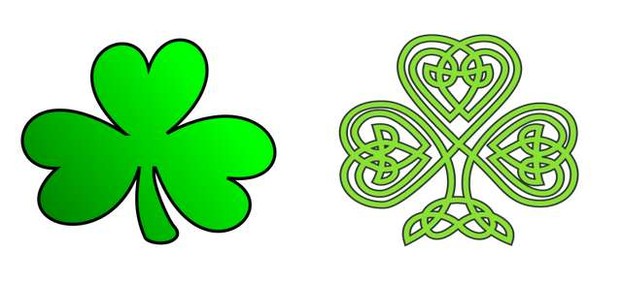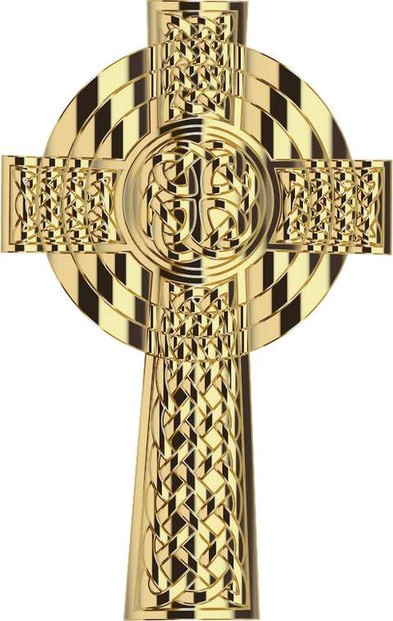St. Patrick's Day is the most popular holiday of one (not particularly numerous) nation in the world. The 17th March is celebrated on all continents and symbols are an important part of such events. While everybody likes green drinks and the music of harps, most don't know much about the rich symbolism of this special feast.
This article aims to correct this problem. It will try to present the existing symbolism in a historical context so you'll know what are the meanings of the shamrocks, colors, leprechauns, and other elements of the next St. Patrick's Parade you'll attend.
So here they are. 10 symbols of St. Patrick's Day.












 Vintage Postcard Artists with 10 Examples of Easter Cardson 02/21/2025
Vintage Postcard Artists with 10 Examples of Easter Cardson 02/21/2025
 Valentine's Symbolson 01/23/2025
Valentine's Symbolson 01/23/2025
 Thanksgiving Symbolson 11/12/2024
Thanksgiving Symbolson 11/12/2024
 Famous Witches in Literary Historyon 10/06/2024
Famous Witches in Literary Historyon 10/06/2024


Do you celebrate St. Patrick's Day?
Yes, they are of different origins but through times their cultures blended because the perception of each new generation changed a bit.
The St. Patrick cross flag intrigues me.
It's both expected and unexpected for that cross color to be red. It makes sense in terms of red as the color of the Holy Spirit.
And yet IrishCentral of New York City in its What was the original color associated with St. Patrick? article March 14, 2023, identifies blue as the earliest color associated with him. That article mentions a 13th-century image of a blue-robed St. Patrick.
Might you have come across any St. Patrick Day activities that show him associated with blue?
Thank you for the three St. Patrick's Day-related links at the end of your wizzley.
A charming illustration afforded by the myfairyland link gives us a young Irish lass dancing on a chair.
Might there be a top-10 list of dances, musics and songs particularly beloved by March 17 celebrants?
A near-downtown business in my hometown always offered non-shopping passersby and shoppers a delicious, free St. Patrick's Day meal every March 17.
Their mashed-potato colcannon tasted just a tad delicious-er than all their other delicious-est drinks and foods.
What drinks and foods would you have included as St. Patrick's Day symbols?
Your 8th, 9th and 10th subheadings, about green, orange and white colors respectively, calls to mind your wizzley regarding the rule of the threes.
That rule can be said to apply to the Irish flag, correct?
The 9th subheading, orange, indicates that "Orange is also closely related to gold which is of course ingrained in Irish tradition. This means you can use it as one of the symbols of St. Patrick's Day."
The above description inspired me to re-visit the leprechaun with the pot of gold in the in-text image between subheadings 5 and 6, leprechauns and pot of gold respectively.
That image wouldn't cooperate with me as far as the cursor working up the artistic attributions.
Would that attribution information be available to you?
The in-text image between the 8th and the 9th subheadings, respectively about green and orange flag colors, causes me to consider the complete flag context.
The image looks like the flag-supporting staff is dark.
Might the staff color convey something overtly or subconsciously, subliminally, symbolically?
The seventh subheading, Rainbow, includes a partial image of a rainbow.
Sometimes rainbows look like they start somewhere in the sky and terminate somewhere on the ground. Sometimes, particularly for valley-spanning rainbows over mountain rivers and streams, they look like they have two grounded contexts.
How might one know in the aforementioned context which end musters up gold?
(Might leprechauns be getting an undeservedly bad rep -- ;-D -- because of human error in picking the wrong end for the gold-filled pot?)
The sixth subheading, Pot of gold, considers that "Gold in all classic fairy tales represents one of the major goals and a leprechaun's pot was cordially accepted as a tradition coming from Ireland to the rest of the world."
Does that tradition offer gold -- ;-D - in local coinage or from a leprechaun special mint?
Thank you!
That Florida setting of the first, in-text image accounts for the non-Unitedstatesian look to something quite common among March events. Perhaps those buildings are in one of the many Spanish-speaking neighborhoods there.